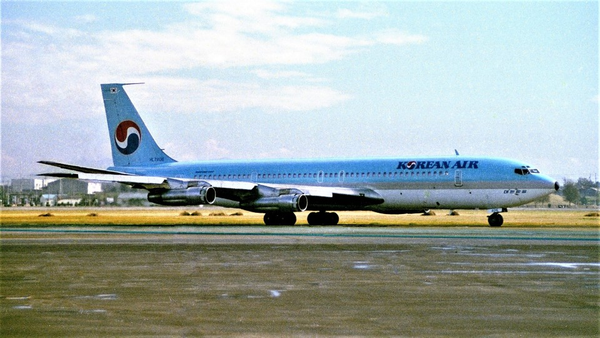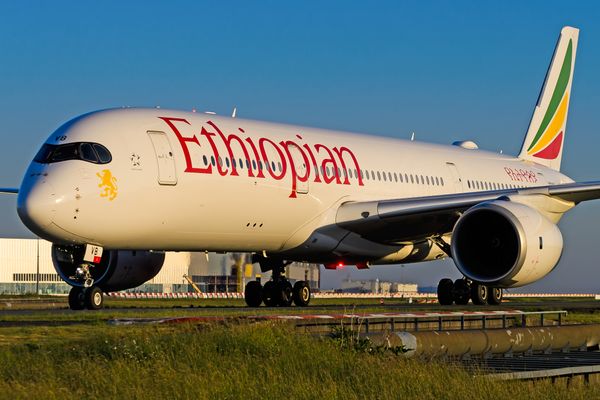
What once seemed like a faraway fantasy, the reality of flying taxis, is now upon us. Over the past decade, hundreds of eVTOL (electric vertical takeoff and landing) start-ups have developed successful prototypes and launched their products into aviation markets globally. While the use of eVTOL aircraft for passenger transport is still limited, eVTOL technologies have already been used in various roles, such as autonomous cargo transport. While eVTOL aircraft have been launched in several markets, the largest being China, notably the United States Federal Aviation Administration, has yet to grant full certification to any eVTOL aircraft. With the rapid development and production of eVTOL projects and their proposed use as urban air transport vehicles, the question remains of just how safe eVTOL transport will be.
Lithium-ion Battery Safety
Almost every eVTOL concept relies on lithium-ion batteries to supply the power necessary for flight. Lithium-ion batteries, the same technology found in most modern smartphones, are designed to have a high charging capacity, last for long periods, and are rechargeable, unlike other battery technology. Using lithium-ion technology, eVTOL companies can improve charging times, range, and speed. For the average four-passenger eVTOL today, using lithium-ion batteries can provide 130 nautical mile ranges and speeds upwards of 170 knots.

However, lithium-ion batteries present their challenges. First, these batteries have been known to explode and catch fire, limiting the size of batteries allowed on commercial flights. In addition, batteries are extremely heavy, making it difficult to increase range on electric aircraft due to weight limitations.
EVTOL manufacturers have implemented sophisticated fire detection and suppression systems for their aircraft to ensure the safety of operations powered by lithium-ion batteries. In addition, multiple battery compartments are typically used to ensure if one battery fails there is still power to support flight. In addition, some companies utilize hybrid technologies where the aircraft can rely on a traditional gas-powered motor in the case of battery depletion or failure.

Other Safety Considerations
In addition to the possible safety hazards posed by lithium-ion batteries, numerous other safety issues must be considered before eVTOLs can operate in the country's most densely populated urban airspace. Many eVTOL designs utilize many rotors, ranging from four to over thirty, ensuring that if one rotor fails, enough lift is still produced to prevent deadly crashes, importantantly to consider the low altitudes at which eVTOL aircraft will be expected to fly. Given the low altitude, bird strikes are much more likely than during a typical commercial flight, requiring many additional rotors if one fails.

Many eVTOL aircraft are also set to be operated autonomously without a human pilot. With computers controlling aircraft movements through congested airspace, autonomous flight promises to reduce human error in the sky, making eVTOLs much safer in flight operations.
eVTOL Certification
One of the most significant challenges facing eVTOL deployment, especially in the United States, is government certification. As eVTOL aircraft are entirely new, the standard certification standards and processes do not apply to these aircraft. The United States Federal Aviation Administration (FAA) initially planned to certify eVTOL aircraft under updated airworthiness standards for small airplanes. However, in 2022, the FAA announced they would instead certify eVTOL aircraft as "powered lift" aircraft (like the Bell Boeing V-22 Osprey).

The FAA has also taken numerous additional steps to ensure the safety of eVTOL operations before issuing airworthiness certifications, something the agency hopes to accomplish before the launch dates in 2025 set by many eVTOL manufacturers. To successfully come to market in the United States, eVTOL manufacturers must complete a rigorous certification process, including dozens of test flights and simulations of emergencies to demonstrate how eVTOL aircraft will respond.
While the regulatory challenges that eVTOL aircraft face are a roadblock for manufacturers and customers alike, it shows the tremendous effort being put in to ensure safe eVTOL operations. As eVTOLs come closer to reaching the market in the United States, the safety of those aircraft will not be questioned.
US Air Force to Launch New Experimental One-Way Attack Drone Unit » GlobalX Secures Rare Authorisation to Operate Intra-Canada Charter Flights » VIDEO: What It's Like Onboard China's COMAC C919 »
Comments (0)
Add Your Comment
SHARE
TAGS
INFORMATIONAL eVTOL Aviation eVTOL Aircraft Aviation Flight Safety eVTOL Technology Flight Safety Aviation TrendsRECENTLY PUBLISHED
 VIDEO: What It's Like Onboard China's COMAC C919
We flew onboard China Eastern's COMAC C919 to experience China's homegrown narrow-body up close. From seat comfort to cabin layout to noise levels to tech: how does it really compare with the Boeing 737 and Airbus A320? This review puts all three workhorses under the same spotlight.
TRIP REPORTS
READ MORE »
VIDEO: What It's Like Onboard China's COMAC C919
We flew onboard China Eastern's COMAC C919 to experience China's homegrown narrow-body up close. From seat comfort to cabin layout to noise levels to tech: how does it really compare with the Boeing 737 and Airbus A320? This review puts all three workhorses under the same spotlight.
TRIP REPORTS
READ MORE »
 KAL858: The North Korean Bombing that Shocked the World
Among the 99 passengers boarding Korean Air Flight 858 on November 29, 1987, few could imagine their journey would end as one of aviation's darkest mysteries.
STORIES
READ MORE »
KAL858: The North Korean Bombing that Shocked the World
Among the 99 passengers boarding Korean Air Flight 858 on November 29, 1987, few could imagine their journey would end as one of aviation's darkest mysteries.
STORIES
READ MORE »
 Ghost Networks: The Rise, Fall, and Revival of Fifth-Freedom Flights
Fifth-freedom flights — routes where an airline flies between two countries outside its home base — have always lived in aviation's twilight zone. We chart their rise, their near-disappearance, and the surprising markets where they still thrive today. Then we take you on board a special Seoul-Tokyo fifth-freedom flight to show how the experience stacks up against a typical regional carrier.
TRIP REPORTS
READ MORE »
Ghost Networks: The Rise, Fall, and Revival of Fifth-Freedom Flights
Fifth-freedom flights — routes where an airline flies between two countries outside its home base — have always lived in aviation's twilight zone. We chart their rise, their near-disappearance, and the surprising markets where they still thrive today. Then we take you on board a special Seoul-Tokyo fifth-freedom flight to show how the experience stacks up against a typical regional carrier.
TRIP REPORTS
READ MORE »



